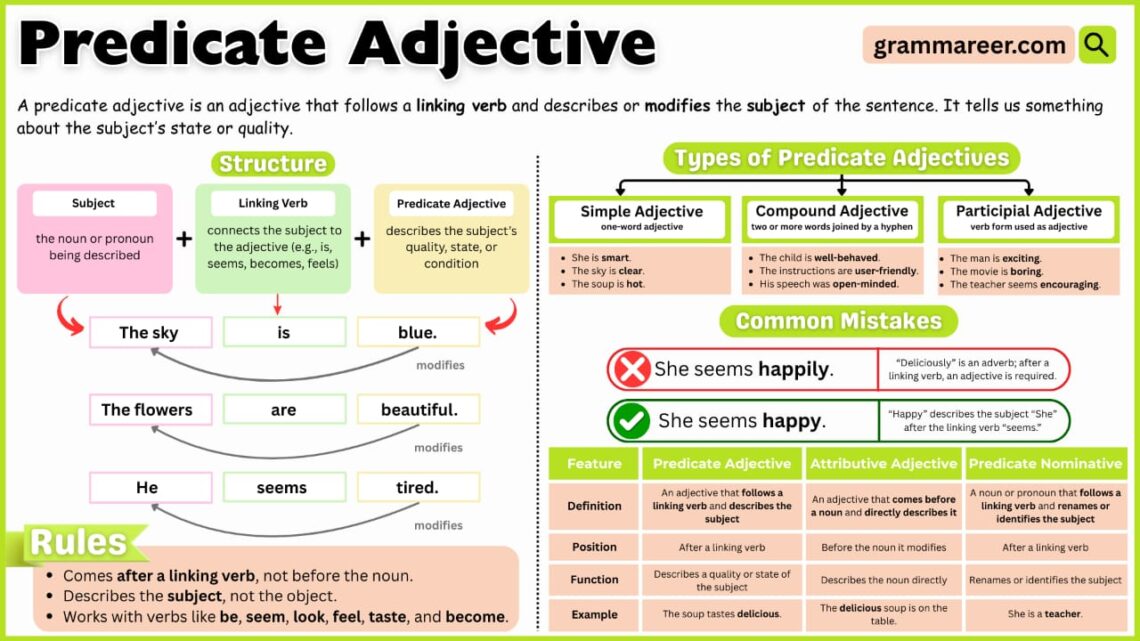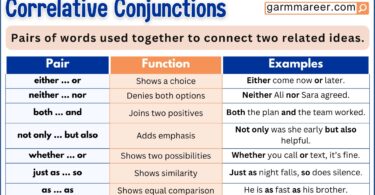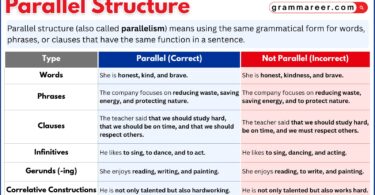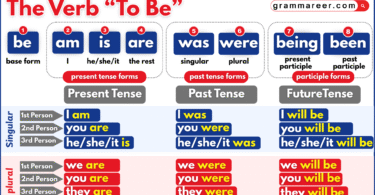We often use adjectives to make our sentences more interesting. For example, instead of just saying “a tree,” we might say “a big tree” or “a magical tree.” Usually, adjectives come before nouns to describe them. But that’s not the only way they work. Sometimes, adjectives appear at the end of a sentence instead of before a noun. This type of adjective is called a predicate adjective.
Table of Contents
What is a predicate adjective?
A predicate adjective, also called a predicative adjective, is an adjective that appears in the predicate part of a sentence. Every sentence has two main parts: the subject and the predicate.
- The subject tells us who or what the sentence is about, usually a noun or pronoun.
- The predicate tells us what the subject does or experiences. It usually has a verb and may include other words like objects or complements.
For example: The flowers are beautiful.
Here, the flowers is the subject, and are beautiful is the predicate. The word beautiful is a predicate adjective because it describes the subject.
Definition of Predicate Adjective
A predicate adjective is an adjective that comes after a linking verb and describes the subject of the sentence.
Example:
- The sky is blue. (Here, blue is the predicate adjective describing the subject sky.)

Identifying Predicate Adjectives
The easiest way to spot a predicate adjective is to look for a linking verb. Linking verbs don’t show action — they connect the subject to more information about it.
Here are some common linking verbs:
- To be verbs: am, is, are, was, were, will be, has been, have been.
- Example: The sky is blue.
- Sense verbs: feel, look, smell, taste, sound.
- Example: This soup tastes delicious.
- Status verbs: appear, become, continue, grow, seem, turn.
- Example: She became tired after the long walk.
A linking verb is usually followed by either an adjective (predicate adjective) or a noun (predicate nominative).
Where Does a Predicate Adjective Appear in a Sentence?
A predicate adjective usually comes right after a linking verb.
- Example: The baby is happy.
- Sometimes, an adverb can come in between, but the adjective still follows the verb.
- Example: Her dress is really beautiful.
You can also use more than one predicate adjective in the same sentence by joining them with and or or.
- Example: The cake was soft and sweet.
- Example: The movie was funny and exciting.
Predicate adjectives are often found near the end of the sentence, and they can be followed by extra details like prepositional phrases or clauses.
- Example:The classroom was quiet after the teacher left.
- Example: He felt nervous before giving his speech.
Predicate Adjective Rules
The key rule to remember about predicate adjectives is this: they only work with linking verbs.
If there’s no linking verb, you won’t find a predicate adjective in standard English.
For Example:
- ❌ Incorrect: She runs quick.
- ✅ Correct: She runs quickly.
Here, runs is an action verb, not a linking verb. That’s why we need the adverb quickly, not the adjective quick.
But the reverse is also true: when you do have a linking verb, you should use a predicate adjective—not an adverb.
For example:
- ✅ Correct: The flowers are beautiful.
- ❌ Incorrect: The flowers are beautifully.
Be Careful with Verbs That Can Be Both
Some verbs can act as either linking verbs or action verbs, depending on the meaning. That’s where many learners get confused.
Take these two sentences:
- The cake tastes sweet. (Here, tastes is a linking verb, and sweet is a predicate adjective describing the cake.)
- The chef tastes carefully. (Here, tastes is an action verb, and carefully is an adverb describing how the chef is tasting.)
Both sentences are correct, but the meaning changes completely.
Predicate Adjectives vs. Predicate Nominatives
Not every linking verb needs a predicate adjective. Sometimes, the word that follows is a noun, called a predicate nominative.
- Predicate adjective: Sara is happy. (Happy is an adjective.)
- Predicate nominative: Sara is a teacher. (Teacher is a noun.)
So, keep this in mind: linking verbs connect the subject to either an adjective (predicate adjective) or a noun (predicate nominative).
Examples of predicate adjectives:
- The sky is clear.
- My brother seems tired.
- The soup smells delicious.
- Her voice sounds sweet.
- The baby looks happy.
- The road was empty.
- Their plan appears risky.
- The coffee tastes bitter.
- The cat grew playful.
- The students are ready.
In each sentence, the adjective comes after a linking verb and describes the subject.
Why Predicate Adjectives are crucial?
There are a couple of good reasons why predicate adjectives are important.
1. Don’t use an adverb when you need an adjective.
Linking verbs are completed by either an adjective (predicate adjective) or a noun (predicate nominative). They are never completed by an adverb.
For example:
- ❌ Incorrect: The pizza smells wonderfully.
- ✅ Correct: The pizza smells wonderful.
Here, smells is a linking verb, so it needs the adjective wonderful, not the adverb wonderfully.
Another one:
- ❌ Incorrect: The flowers look beautifully.
- ✅ Correct: The flowers look beautiful.
Many people make this mistake because they know adverbs usually modify verbs. But linking verbs are different—they describe a state, not an action. That’s why an adjective is the right choice.
2. Predicate adjectives make sentences clearer and more descriptive.
Without predicate adjectives, sentences often sound flat or incomplete. They give the subject a quality or state that helps readers or listeners understand it better.
For example:
- Without predicate adjective: The cake is. ❌ (incomplete)
- With predicate adjective: The cake is delicious. ✅ (clear and descriptive)
Predicate adjectives transform a plain sentence into one that conveys meaning and detail.
Key Point
Always use an adjective (not an adverb) after a linking verb.
❌ Incorrect: The cake tastes sweetly.
✅ Correct: The cake tastes sweet.
FAQs
A predicate adjective is an adjective that comes after a linking verb and describes the subject of the sentence.
Example:
The sky is blue. (Here, blue is the predicate adjective describing the subject sky.)
• A predicate noun (also called a predicate nominative) comes after a linking verb and tells us what the subject is. It’s always a noun or pronoun.
👉 Example: My dad is a doctor. (Doctor = predicate noun)
• A predicate adjective also comes after a linking verb, but instead of telling what the subject is, it describes the subject.
👉 Example: My dad is kind. (Kind = predicate adjective)
es! Every complete sentence needs a predicate. The predicate is the part that tells us something about the subject. Without it, the sentence is incomplete—it becomes just a fragment.
Even in imperative sentences (like commands), where the subject “you” is understood but not written, there’s still a predicate. For example:
• Sit down. (The predicate is sit down.)
• Close the door. (The predicate is close the door.)
So, no matter what type of sentence it is, a predicate is always there.
Final Thought
As we learned, predicate adjectives come after a linking verb and describe the subject. They make sentences more meaningful by adding qualities or states to the subject. Mastering them helps you write and speak with greater clarity and expression.
You May Also Like
Descriptive Adjectives
Degrees of Comparison of Adjectives
Types of Clauses in English
All Parts of Speech




